#Indo-Islamic Architecture
Explore tagged Tumblr posts
Text




My City: Lahore (2) (3) (4) by hasham2
Via Flickr:
(3) Mural art of Lahore fort (4) Mirror Palace
#gateway#tiles#mughal architecture#indo-islamic architecture#doors#mural#archway#palace#courtyard#pakistan#punjab#lahore
69 notes
·
View notes
Text
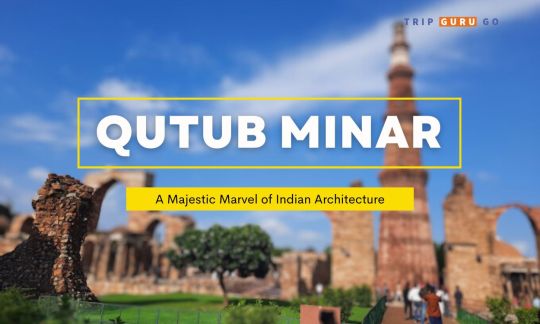
#Qutub Minar#Indian Architecture#UNESCO World Heritage Site#Delhi#India#Indo-Islamic Architecture#Historical Landmark#12th Century Monument#Majestic Tower#Cultural Heritage#Tourist Attraction#Architectural Marvel#Delhi Sightseeing#Qutb Complex#Delhi Tourism#Heritage Conservation
0 notes
Text

• Mahabat Maqbara Complex - Built From 1878 & Completed In 1892 •
#gothic#mahabat maqbara#mahabat khan II#mausoleum#islamic#indo-islamic#amalgamation#babi dynasty#sultanate period#goth#style#sculptures#marble tracery#marble columns#silver doorways#minarets#staircases#architectural style#mixture#cross culture#late18th#early19th#century#history
1 note
·
View note
Text
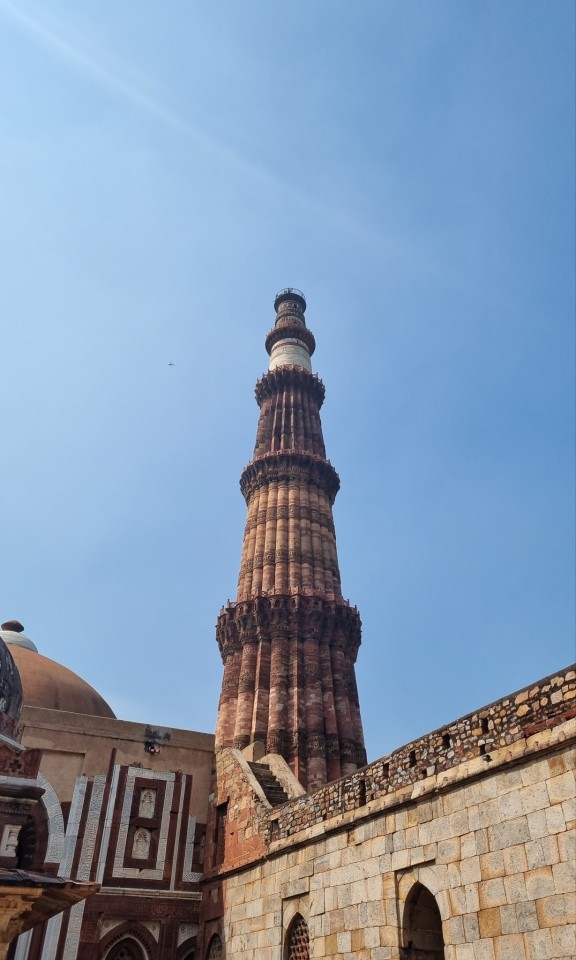
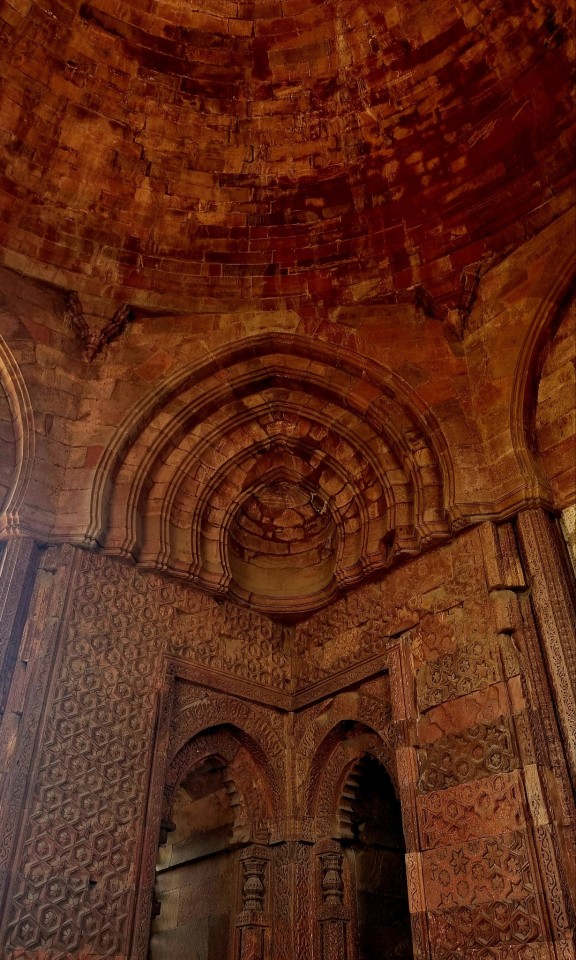
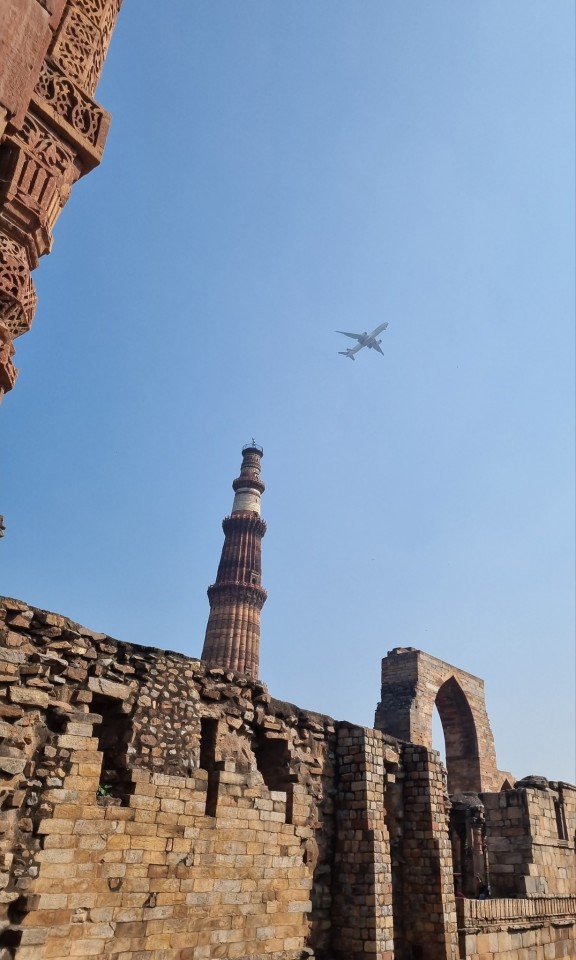
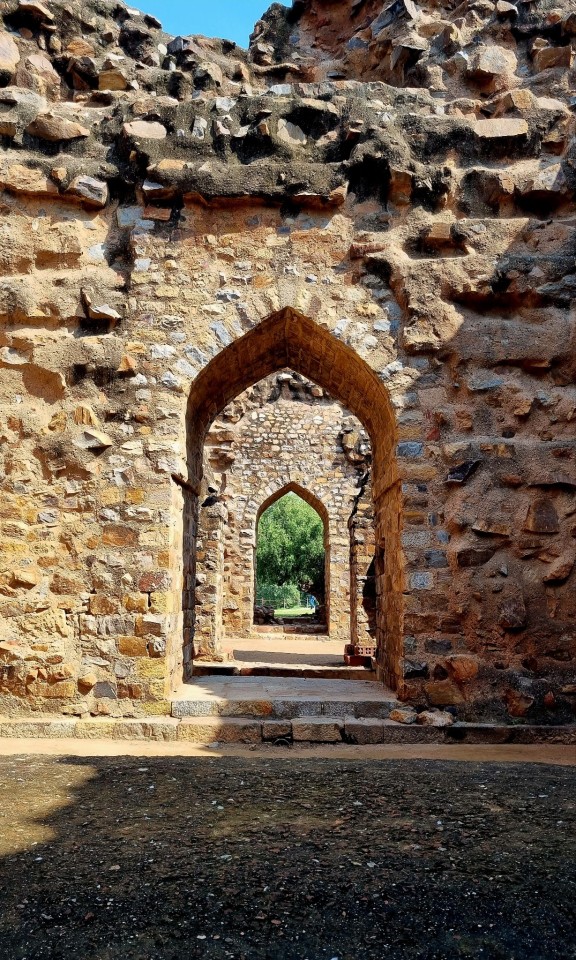
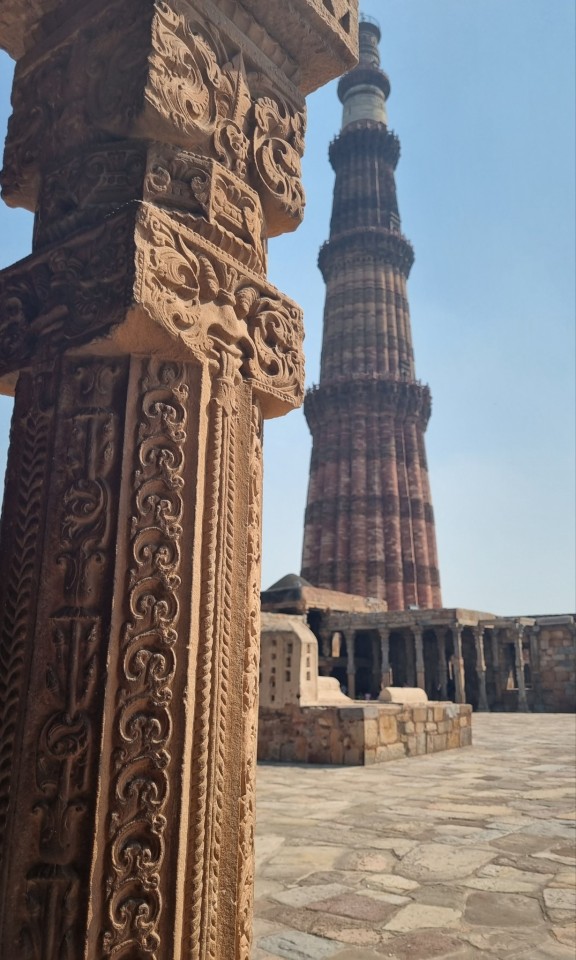
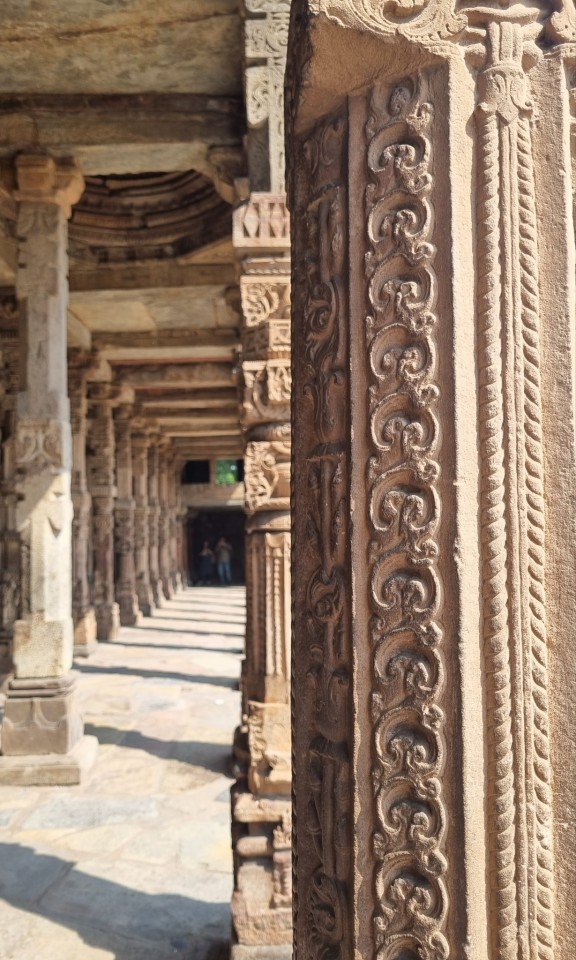
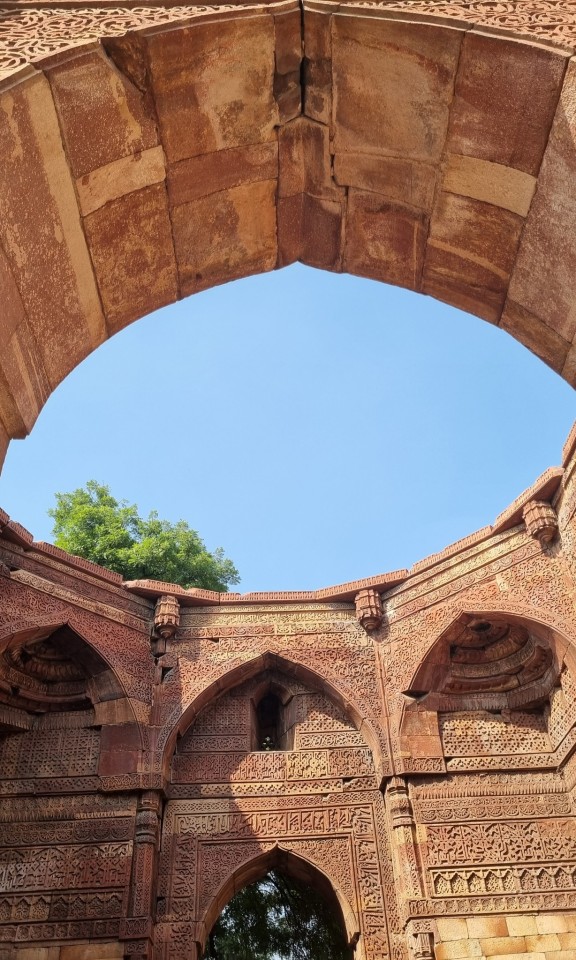
Please like or repost if downloading. Please give credit if you're sharing it online.
#qutub minar#history#monuments#dilli#delhi#new delhi#india#cultural#asia#delhi sultanate#mughals#mehrauli#qutub complex#indo islamic architecture#qutb ud din aibak#iltutmish#tughlaq dynasty#lodi dynasty#wallpaper#historical wallpapers#phone wallpapers#indian monuments#historical monuments#for you#trending#tumblr
18 notes
·
View notes
Note
Isn't blaze based on Middle Eastern cultures or something
Like Easter Blaze is cool and all, but there's gotta be a more fitting holiday to give her for april
She's distinctly South Asian, most likely Indian.

In the middle bottom row in the pic above, you can see her wearing Shalwar, (maybe shalwar kameez? it’s hard to tell what kinda top she has) which is a popular Southern and Central Asian fashion.
Her final design includes a straight-up bindi– listed as such on the Sonic wiki. Bindi are a mark on the forehead worn by women in Hinduism, Buddhism and Jainism, and occasionally Islam (notably in Pakistan during Eid). While obviously anyone of any race can be of any religion, as the bindi originated in Southern Asia, it’s highly associated with that area and is worn by, well, a crapton of people in South and Southeast Asia, for both cultural and religious reasons.
Also, her kingdom: we don’t see it much in the games (in Rush Adventure, they’re mostly traveling through outlying islands and ruins), but we do see it in the IDW comics.
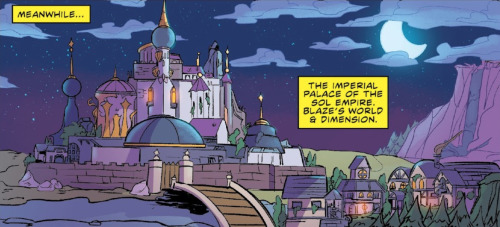
It seems very inspired by Mughal architecture, an Indo-Islamic style developed from Indian, Islamic, Iranian and Central Asian traditions.
In the mobile game Sonic Forces: Speed Battle, Blaze is given a costume for Lunar New Year, as is Silver. Lunar New Year is associated mainly with China, but is celebrated in several other Asian countries, including Indonesia, Japan, Malaysia, the Philippines, Singapore, South Korea, Thailand, and Vietnam. We also got THIS tweet from the official Sonic account in November 2020, showing her having tea in her palace. @penosh-wom pointed out to me that the patterns in the room are “VERY reminiscent of India,” and that the scenery outside looks very much like the Asian coast.
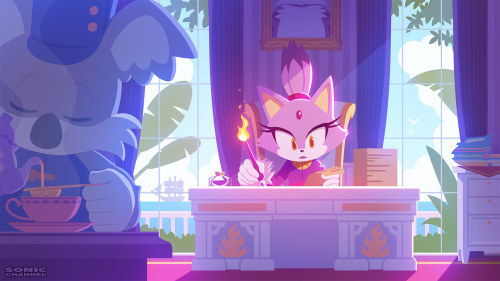
The caption is in Japanese, but translating it to English shows that the descriptive is literally “Indian summer with calm waves.” An Indian summer is a term for unusually long hot weather in autumn, but like. Come on.
With that, I would say Blaze is most likely Indian, though the coding is a little vague. She is at the very least Asian, likely South or Southeast.
All that to say. Where the fuck is her Diwali costume. You absolute cowards. It's literally the festival of lights. People literally light candles the entire time. She is the fucking princess of fire. If I don't see a Diwali outfit this October I'm gonna start lighting Sega on fire
109 notes
·
View notes
Text
Idk who needs to hear this but removing Mughal history from history textbooks completely to the point that the future generations wouldn't even KNOW who the Mughals were, is not the way to go.
You can't just distort history and remove a chunk of it. That's a very biased way of viewing something that actually happened not even 500 years ago. History is not fiction. You can't remove the existence of real people.
When you remove Mughal history, you also remove the good and bad they did. You remove the reason behind the beautiful blend of Indo-Islamic architecture, culture and art we see today, few of the things that have implied towards a sense of harmony amidst the religious chaos that reeked back in the day. But with that, you ALSO remove the massive destruction and looting of thousands of temples, the inhumane measures, laws and punishments they put up against non-Muslims, the struggles and sacrifices of the Hindus and other oppressed groups who protested against these atrocities oh-so-courageously. You remove their cries, their brave stories. You remove the valiant fights Shivaji, Maharana Pratap and their likes put up against these people. You remove the martyrs of the several genocides these guys (especially Babur) caused. You remove them all, because once there's no Mughals, who did these brave souls fight against?
Also why only Mughals? What about the Khaljis, Mamluks, Tughlaqs, Ghaznis and others? They committed way worse atrocities than the Mughals did tbh. So with that logic all of their histories should be wiped out? But that's almost like a 700-800-year-history-wipeout we're talking about (the dates might not be accurate). And that's not how it works.
Here's a better idea. Just... show their good and their bad, and just don't glorify them and their tyranny. We keep the struggles and the sour lives the suppressed groups lived under the rule of these dynasties, and maybe glorify the brave souls who fought selflessly against them. We show how they plundered any place of worship that wasn't a mosque (or Islamic in general), and treated the idols of these religions post-destruction. We can also include the non-Islamic kingdoms and kingdoms that stood still and strong despite the invasions, like the many Hindu kingdoms in the south, then the Ahom dynasty and a few other small kingdoms in the northeast, etc. We can bring lesser-known and highly underrated non-Islamic kingdoms into light too in this process, and how they dealt with these invaders. (Half of these points are already depicted in the existing textbooks, or... atleast the textbooks *I* studied back in school, but I think they get kinda overshadowed by the subtle glorification of these invaders)
These are the solutions I'd provide. If anyone has anything to add, please do, or if yall have better solutions, pls lmk. But removing a huge chunk of history just out of pure hate and revenge like this is NOT the way to go about in the field of history LMFAO. It's the same as how that one biased historian recently claimed that no Hindu temples were destroyed by the Islamic invaders.
#keep the conversation civil btw cuz i dont wanna fight with anyone#mughal empire#ncert#cbse#cbseboard#hindublr#mughal invasion#mughal dynasty#desiblr#desiposting#desi tumblr#desi tag#islamic invaders#islamic invasion
210 notes
·
View notes
Note
hi! i was wondering if you had any ethnicities in mind for silver and blaze when you draw them? you have idea how happy i am to see silver and blaze gijinkas of color! ive always hced silver as arab(-italian) because of his kohl (eyeliner), him fighting iblis and ifrit, and him having a darker complexion in official art. And blaze is pretty overtly desi coded with the indo-islamic architecture of her palace, bindi, etc. But yeah anyways YAY to your art, thank you for posting!
Thank you! You pretty much nailed my hcs with yours, I headcanon silver as middle eastern, and blaze as indian + south asian (for some reason thailand comes to mind).
Also it's not my place to speak but it bothers me a little how people will swear silver is white, even though every official art has him with a darker complexion than sonic. i know it's a joke in some cases (because he's literally white) but ive got comments on my gijinka like "wow i never thought of silver being dark skinned!" Which makes me sad. I know sega has pretty much whitewashed the entire sonic cast with their 3d renders after 06 (look at the difference in rouge's skin tone in sonic adventure 2 and now...) but most sonic channel art continues drawing silver with darker skin, so i wish that wasn't ignored 😓
21 notes
·
View notes
Note
what is the architecture like in the different fatebreaker factions?
Oh boy I have like. Hundreds of pins on Pinterest for this stuff hahaha
We'll discount Mezalea and the Ocean empire since those are just directly from empires smp and are basically the same architecturally wise, and focus on the big ones that we've actually seen in the fic so far; so Methysko, Cadavía, Celestios and Oblivion
(all pics will be from Wikipedia since they're free for use)
Cadavía's architecture would most closely resemble sort of like, indo-islamic architecture with a shit ton of large beautiful and intricate arches. The Rumi Darwaza is a really good example of the type of architecture you'd find in Cadavía


Also really recommend looking at havelis too, great references

I also tend to imagine them building more horizontal than vertical if only because, well, heat rises and they live in a very hot desert. It's also needless to say that ye random old village won't look as fancy as this. For this post I'm mostly thinking about the capitals, palaces, castles, and other important fancy buildings
Methysko's architecture is closer to byzantine and neo-byzantine architecture - the hagia sophia is a really really good example of it


Neo byzantine style is used for some of the coolest churches you'll ever see. (sorry for the Christian influence 😔 I just like how churches look)

And I'd probably throw some lil renaissance inspo in there because I am me lol.
Celestios is way more european in style, I tend to lean towards baroque architecture because I'm basic. Stuff like this


It would also, for the older buildings like the crastle, lean more towards the much simpler romanesque (and romanesque revival) style

(the crastle would be a bit more grand, obviously. This is mostly to help visualise the overall shapes of things)
And finally for Oblivion, the style would be much simpler tbh. Their main feature is that they've got very few people and less means than the other kingdoms and mostly manage to keep their power and autonomy thanks to their vast network of spies and assassins and, ofc, the sculk. The way I keep imagining Oblivion is with those little fishing village sort of architectural style, though instead or houses being suspended above water it's more houses creeping up the large ravine they're in, building very vertically rather than horizontally. I really couldn't think of an earth equivalent but if you have pointers for me to help visualise it to others I'd definitely take it in otherwise I might just have to mcfreakin draw it
(tbh I've been meaning to draw little background pieces for all the nations but... It'll have to wait. Backgrounds hard)
8 notes
·
View notes
Text
A walk through Bengal's architecture
Bengali architecture has a long and rich history, fusing indigenous elements from the Indian subcontinent with influences from other areas of the world. Present-day Bengal architecture includes the nation of Bangladesh as well as the Indian states of West Bengal, Tripura, and Assam's Barak Valley. West Bengal’s architecture is an amalgamation of ancient urban architecture, religious architecture, rural vernacular architecture, colonial townhouses and country houses, and modern urban styles. Bengal architecture is the architecture of Wind, Water, and Clay. The Pala Empire (750–1120), which was founded in Bengal and was the final Buddhist imperial force on the Indian subcontinent, saw the apex of ancient Bengali architecture. The majority of donations went to Buddhist stupas, temples, and viharas. Southeast Asian and Tibetan architecture was influenced by Pala architecture. The Grand Vihara of Somapura, which is now a UNESCO World Heritage Site, was the most well-known structure erected by the Pala rulers.

The Grand Vihara of Somapura
According to historians, the builders of Angkor Wat in Cambodia may have taken inspiration from Somapura. Bengal architecture became known for its use of terracotta due to the scarcity of stone in the area. Clay from the Bengal Delta was used to make bricks.
The temple architecture has distinct features like the rich wall decoration, often known as the terracotta temples, which was one of the remarkable elements of Bengali temple architecture. The double-roofed architecture of thatched huts was replicated by Bengali temples. Square platforms were used to construct the temples. Burnt brick panels with figures in geometric patterns or substantial sculptural compositions served as the temples' adornment.

Dochala style
These served as models for many temples that were built in undivided Bengal. Construction materials used in ancient times included wood and bamboo. Bengal has alluvial soil, so there isn't a lot of stone there. The bricks that were utilized to build the architectural components were made from stone, wood, black salt, and granite. Bengal has two different types of temples: the Rekha type, which is smooth or ridged curvilinear, and the Bhadra form, which has horizontal tiers that gradually get smaller and is made up of the amalaka sila. Mughal architecture, including forts, havelis, gardens, caravanserais, hammams, and fountains, spread throughout the area during the Mughal era in Bengal. Mosques built by the Mughals in Bengal also took on a distinctive regional look. The two major centers of Mughal architecture were Dhaka and Murshidabad. The do-chala roof custom from North India was imitated by the Mughals.

Jorasako thakurbari
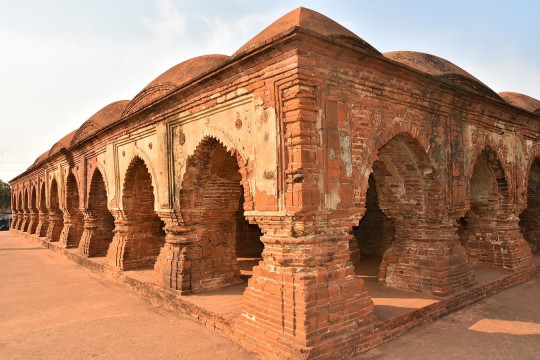
The Rasmancha is a heritage building located at Bishnupur, Bankura district, West Bengal.
Influence of the world on Bengal architecture: Although the Indo-Saracenic architectural style predominated in the area, Neo-Classical buildings from Europe were also present, particularly in or close to trading centers. While the majority of country estates had a stately country house, Calcutta, Dacca, Panam, and Chittagong all had extensive 19th and early 20th-century urban architecture that was equivalent to that of London, Sydney, or other British Empire towns. Calcutta experienced the onset of art deco in the 1930s. Indo-Saracenic architecture can be seen in Ahsan Manzil and Curzon Hall in Dhaka, Chittagong Court Building in Chittagong, and Hazarduari Palace in Murshidabad.
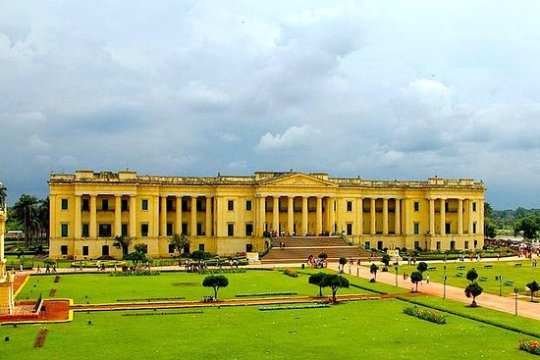
Hazarduari Palace in Murshidabad
The Victoria Memorial in Kolkata, designed by Vincent Esch also has Indo-Saracenic features, possibly inspired by the Taj Mahal. Additionally, Kolkata's bungalows, which are being demolished to make way for high-rise structures, have elements of art deco. The 1950s in Chittagong saw a continuation of Art Deco influences. The Bengali modernist movement, spearheaded by Muzharul Islam, was centered in East Pakistan. In the 1960s, many well-known international architects, such as Louis Kahn, Richard Neutra, Stanley Tigerman, Paul Rudolph, Robert Boughey, and Konstantinos Doxiadis, worked in the area.

The Jatiyo Sangshad Bhaban
This iconic piece of contemporary Bangladeshi architecture, was created by Louis Kahn. Midsized skyscrapers dominate the cityscapes of contemporary Bengali cities, which are frequently referred to as "concrete jungles." With well-known architects like Rafiq Azam, architecture services play a key role in the urban economies of the area. Overall Bengal architecture was influenced by various contemporaries of their time and continues to evolve.

Gothic architectural style seen in St. Paul's Cathedral in Kolkata.

Zamindar era buildings in ruin.

Belur Math in Howrah
#bengali#bangla#west bengal#bangladesh#tripura#assam#desi#বাংলা#india#architecture#tales#bengal architecture#history#kolkata#international#technology#information#temple#asia#bricks
193 notes
·
View notes
Text
Architecture of Dawnbreak, Part I

For how much I relish any occasion to talk about architecture in Vessel for the Radiance, I should have realised earlier that I could just infodump about it outside of the fic. So here we go — Dawnbreak architecture, part I and some irl inspirations I've used when writing.

Under the cut, on account of many photos.

Inspiration
Dawnbreak is heavily inspired by India, which can be seen in how I write culture, traditions and, well, architecture. To be even more specific, it is Indo-Islamic architecture that I borrow most heavily from. (To be even even more specific — Mughal era of Indo-Islamic architecture.)
I choose it as an inspiration for two main reasons:
1. It matches what little we see of moth culture and reflects elements of their religion. Namely, a very strong focus on colour and light, and plenty of ornamental details: both organic and geometric.
2. It serves as a great contrast to Hallownest’s style, especially the one used in the City of Tears.


Conversely, when I talk about “Dawnbreak architecture” what I mainly mean is the style of the head Temple, since it’s the most quintessentially Dawnbreak structure of all. Other temples would model themselves after it, but there would be plenty of influences from local cultures. Which is a topic for a whole other essay entirely.

Examples
A great example of how I imagine the temple to look is Amber Fort in Rajasthan. I actually only saw it when writing this post, so I was incredibly surprised by how well it fit with my mental image. It’s a layered, massive fort made from sandstone and marble, with heavy outer walls and many nestled courtyards… Imposing from the outside and heavily decorated inside.





6 notes
·
View notes
Text


Tughlaq architecture, a prominent example of Indo-islamic architecture. Batter ( sloping walls) were used for increased strength and support.
5 notes
·
View notes
Text




My City: Lahore (2) (3) (4) by hasham2
Via Flickr:
(2) Mosque of Wazir Khan
#minaret#mosque#sufi mausoleum#mughal architecture#indo-islamic architecture#ornate ceilings#kashi-kari#tiles#pakistan#punjab#lahore
44 notes
·
View notes
Text
Jali
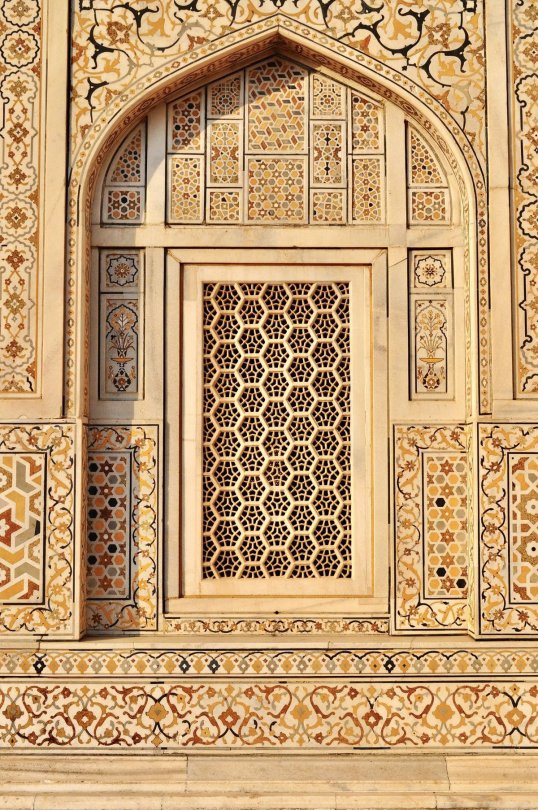
An exquisite Indo-Islamic & Mughal architectural feature, is a finely crafted lattice stone screen with intricate perforated patterns
Meaning gauze or net in Urdu, Jali combines outward vision with privacy, reflecting the beauty of modesty in Islamic traditions
Source: Baytown AL Fann
#photography#art#architecture#residential architects#islamicart#islam#muslims#world history#history#islamic history#mughal#I
44 notes
·
View notes
Text
Dwarka and Ahmedabad Trip - Family Travel form Korba Chhattisgarh
As I packed my bags at my residence in Korba, Chhattisgarh, I felt a thrill within me. This tour was not just a simple vacation; it was a family trip meant to unite relatives from all corners. Our destination was the sacred town of Dwarka and the bustling city of Ahmedabad.
Setting Off from Korba
The day was just breaking when the family embarked on the trip. Loading my bags into the car, I felt emotions of excitement and anticipation. The journey to Bilaspur from Korba was familiar, yet each trip had its own story. Along the highways, we passed green plantations and small-scale farms that dotted the landscape.
In about an hour and a half, we reached Bilaspur, where my relatives from Bhilai joined us. It was like an informal family gathering in the parking lot. After a quick meal together at a nearby hotel, we headed to the railway station to catch our train to Dwarka.
The Train Journey: A Time for Bonding
The train journey was filled with fun and shared stories. The energy within the group was high as we traveled from the territory of Chhattisgarh to Gujarat. Along the way, we spotted beautiful peacocks and wind turbines. The home-cooked Chhattisgarhi dishes we’d brought turned into a communal feast, enhancing the bond between family members.
As evening arrived, I watched the sunset in Gujarat, noting how the sun lingered longer than it would back home. Spending this time with positive, cheerful relatives in beautiful surroundings made the journey unforgettable.
Arriving in Dwarka

After a night on the train, we arrived in Dwarka, greeted by the early morning sunlight on the ancient temples. We checked into our hotel, where my grandparents chose to rest while the rest of us headed to the Dwarkadhish temple. Walking through the throngs of devotees, the temple's intricate sculptures left us all spellbound, and the sense of peace within its walls was overwhelming.
The next day, we visited Bet Dwarka, a small island accessible by ferry. The kids were excited, and we bought real pearls with plans to make earrings for family members. This island, believed to be Lord Krishna's first residence, held great historical significance. We explored its temples and beaches, soaking in the spiritual and natural beauty of the place.
In the afternoons, we wandered through vibrant markets, sampling local crafts and delicious food. I made sure to pack some native dishes, including fish and dried fish, to bring home. In the evenings, we gathered as a family, sharing stories over meals at small dhabas, creating memories over shared plates.
Journey to Ahmedabad and Exploring the City
After a few days in Dwarka, we set out for Ahmedabad, a scenic drive across Gujarat. Upon arrival, we checked into our hotel and set off to explore the city. Our first stop was Sabarmati Ashram, where Mahatma Gandhi lived for many years. Walking through the peaceful surroundings, I felt a renewed sense of respect for the man who had left such a lasting impact on Indian history.
That evening, we visited the bustling night market at Manek Chowk. I found myself drawn to the hot and salty street food, steering clear of the sweet Gujarati flavors that don't quite suit my taste. But dining together under the market's bright lights made the evening perfect.
Cultural Experiences and Wildlife Adventure
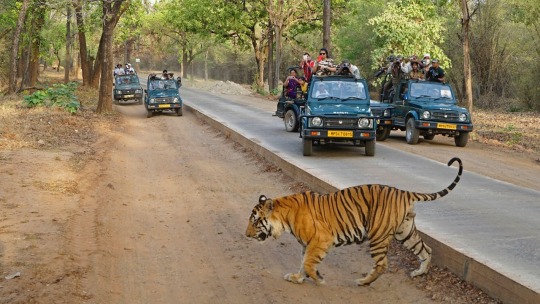
The next day, we explored Ahmedabad's architectural and cultural landmarks, including the beautiful Adalaj Stepwell. This Indo-Islamic architectural marvel, with its shaded steps, offered a cool respite from the heat.
Afterward, we went to a water park, where we were surprised to see Raftaar, who was performing at a concert that evening. Meeting him added an unexpected thrill to the day!
The following day, we continued our adventure with a trip to Gir National Park, home to the majestic Asiatic lions. The safari through the park was a thrilling experience as we spotted not only lions but also other wildlife, including deer and exotic birds. The raw beauty of the forest and the excitement of spotting animals up close made it a memorable addition to our trip.
Coming Home
On our journey back to Korba, the car was filled with animated conversations about the trip’s highlights and the question of when we’d have our next family gathering. This trip was about much more than just visiting new places; it was about being with loved ones and creating memories that would stay with us for years.
As I unpacked my bags at home, I felt fulfilled by the laughter and experiences we had shared. This journey from Korba to Dwarka, Ahmedabad, and Gir National Park left me eagerly awaiting our next family adventure, knowing that travel is truly enriched by the company we keep.
3 notes
·
View notes
Text
The Advantages of the Arabic Language
The Arabic language, one of the oldest and most widely spoken languages in the world, holds a unique position due to its rich history, cultural significance, and linguistic features. Here are some of the key advantages of learning and understanding Arabic:
1. Cultural and Religious Significance
Arabic is the language of the Quran, the holy book of Islam, making it a crucial language for over a billion Muslims around the world. Understanding Arabic allows access to Islamic texts in their original form, offering deeper insight into the religion and its teachings. Moreover, Arabic is the language of a vast body of classical literature, poetry, and philosophy, providing a gateway to a rich cultural heritage.
2. Linguistic Richness
Arabic is known for its expressive and poetic nature. The language has a rich vocabulary, with words that convey nuanced meanings and emotions. Arabic's root system, where words are formed from a base set of consonants, allows for a wide range of word formations and meanings. This linguistic structure enables precise and articulate expression, making it a powerful tool for communication.
3. Global Relevance
Arabic is an official language in 22 countries and is spoken by over 300 million people as their first language. It is also one of the six official languages of the United Nations. Learning Arabic opens doors to a diverse and rapidly growing region, offering opportunities in fields such as diplomacy, international business, journalism, and translation.
4. Economic Opportunities
The Arab world is a significant player in the global economy, with countries rich in natural resources, particularly oil and gas. Knowledge of Arabic is highly valued in industries such as energy, finance, and trade. It can also be beneficial for those working in international relations and global development, where understanding the language and culture can enhance negotiations and partnerships.
5. Intellectual Challenge
Arabic is considered one of the more challenging languages to learn, particularly for speakers of Indo-European languages. The script, grammar, and pronunciation present unique challenges, but mastering them can be intellectually rewarding. The process of learning Arabic can develop cognitive skills such as problem-solving, memory, and analytical thinking.
6. Cultural Appreciation and Understanding
Learning Arabic provides insights into the values, traditions, and ways of life in the Arab world. It fosters cross-cultural understanding and respect, which is increasingly important in our globalized world. By understanding the language, one can better appreciate the contributions of Arab civilization to fields such as mathematics, science, medicine, and architecture.
7. Connection to a Rich History
Arabic has been a lingua franca in many regions throughout history, playing a central role in the spread of knowledge during the Golden Age of Islam. Scholars in the Arab world preserved and expanded upon the knowledge of the ancient Greeks, Romans, and Persians. By learning Arabic, one can access a vast archive of historical texts and gain a deeper understanding of human history.
8. Global Influence
The Arab world has a significant impact on global affairs, particularly in politics, religion, and culture. Arabic media, including television networks like Al Jazeera, play an influential role in shaping international perspectives. Proficiency in Arabic allows individuals to engage with these media sources directly, gaining unfiltered insights into current events and global issues.
Conclusion
The Arabic language offers numerous advantages, from cultural and religious insights to economic opportunities and intellectual challenges. Whether for personal enrichment, professional advancement, or academic pursuit, learning Arabic can be a deeply rewarding experience that opens up a world of possibilities.
5 notes
·
View notes
Text

LAILA MAIN LAILA AISI HOON LAILA HAR KOI CHAHE MUHJSE MILNA AKELA
☾♔; March 17, 2024 ☾♔; 4:56pm ☾♔; sotd: What Jhumka? (from Rocky aur Rani Kii Prem Kahaani) ☾♔; cotd: Rani Chatterjee ☾♔; Thistle Grove Academy ☾♔; Storyboard/Important Connections
𝐓𝐢𝐭𝐥𝐞: lyrics from "Laila Main Laila"
I've always sucked at making storyboard type sets, but YIKES. lol, whatever.
【 𝐎𝐕𝐄𝐑𝐕𝐈𝐄𝐖 】
Laila is an heiress of 𝓡𝓪𝓲𝓬𝓱𝓪𝓷𝓭 Industries, an Indian multinational conglomerate founded by Laila's great-grandfather, Thakur Raj Raichand, in the early 1950's after Partition. While the company has long since gone public, it is still majority owned by the Raichand Family, and they run every aspect of it. Now Mumbai (Bombay) based, the Raichand's originate from the state of Rajasthan where the family once owned a fairly large piece of land that was sold off when Laila's grandfather was young. After succeeding in Bombay, the land was repurchased, as well as much of the surrounding area and a large palace named Chandshah Haveli was constructed in the Indo-Saracenic architecture style.
Karshvar is the seven-story Raichand estate in Mumbai, located on Altamount Road (also known as Billionaires’ Row), the name of the estate comes from Zoroastrian mythology. The Avesta, the primary collection of religious texts in Zoroastrianism, describes seven Karshwar, climbs or zones, that organize the world into seven circles superimposed on top of one another, separated by waters, mountains, and forests. Until the completion of the Ambani’s Antilia, Karshvar was the most expensive private residence in the country, possibly the entire region, and yes, it is more expensive than their literal palace in Rajasthan (as an FYI, Antilia is the most expensive private residence in the world, as of 2014, might’ve been surpassed by now). However, Karshvar still claims the most ground floor square footage of the road.
The Raichand's are a relatively traditional family, certainly in western standards, though they are considered very progressive amongst other Desi's, having a very religiously mixed and accepting family, and very matriarchal family. Women have long held authoritative power over the family, though that has passed matrimonially, with the wife of each successive head of the family gaining that authority. Overall the Raichands are a Hindu family, however, their spouses have come from all over India and beyond, of varied faiths and sects, due to this, the Raichand’s also have large celebrations for holidays of multiple religions, obviously Hinduism, as well as Sikhism, Jainism, and Islam. Their biggest events are Diwali, Durga Puja, Vaisakhi, Navratri, Karva Chauth, Eid, the First and Last Iftars of Ramadan, and Holi. They also have a fairly large, but private, family only event for Raksha Bandhan.
Laila is not close to her maternal family at all, neither is her mother. She's asked about them a couple times before, but her mother doesn't have the best expression when talking about her family, so Laila stopped asking. If they want to know them, they can find them, it's not Laila's problem. She’s not even completely sure if her mom’s original last name is even Burakgazi, her parents have changed the story a few times, but have more or less stayed consistent that they met while her father was working. At one point the story was almost identical to the plot of the film Bang Bang!, wherein a RAW agent supposedly stole the Koor-i-noor diamond back from the British, something involving multi-national terrorists, and her mom being a bank teller caught in the middle after her dad hijacked her blind date, none of which made any sense, but it was a fun story.
【 𝐏𝐀𝐑𝐄𝐍𝐓𝐒 】
𝓐𝓵𝓮𝔂𝓷𝓪 𝓑𝓾𝓻𝓪𝓴𝓰𝓪𝔃𝓲 & 𝓥𝓲𝓴𝓻𝓪𝓷𝓽 𝓡𝓪𝓲𝓬𝓱𝓪𝓷𝓭 FC: Beren Saat & Hrithik Roshan
Mama aur Papa!
【 𝐆𝐑𝐀𝐍𝐃𝐏𝐀𝐑𝐄𝐍𝐓𝐒 】
𝓨𝓸𝓰𝓮𝓼𝓱 𝓡𝓪𝓲𝓬𝓱𝓪𝓷𝓭 & 𝓜𝓸𝓱𝓲𝓷𝓲 𝓡𝓪𝓲𝓬𝓱𝓪𝓷𝓭 née Tiwari FC: Amitabh Bachchan & Jaya Bachchan
Dadaji aur Dadi (paternal grandparents, literally means grandpa/grandma, ji is a respectful suffix, not always used, and can be omitted based on the personal relationship or the situation).
Dadi does not have a favourite grandchild, she loves them all equally. She does, however, have a favourite child, and that is Veer. Papa and Auntie Riya do not like to talk about it.
【 𝐀𝐔𝐍𝐓𝐒 & 𝐔𝐍𝐂𝐋𝐄𝐒 】
𝓥𝓮𝓮𝓻 𝓡𝓪𝓲𝓬𝓱𝓪𝓷𝓭 & 𝓩𝓪𝓪𝓻𝓪 𝓠𝓪𝓭𝓻𝓲 𝓡𝓪𝓲𝓬𝓱𝓪𝓷𝓭 FC: Shah Rukh Khan & Kajol
Tauji & Taiji
(if you see chacha, chachi in the set, no you don't. look, I'm a Bengali okay, not Indian, and in Bengali, there is no Tauji, your dad's brothers are all chacha)
Zaara is publicly referred to as “Zaara Bhabhi”, by netizens, Raichand Industries employees, and other industrialists, all of whom regard her as the true head of Raichand Industries, as even though she does not work in the company, Veer’s love for her and deference to her is well-known, and she has the last word on everything. Because of this she is often the target for schmoozing campaigns (though it doesn’t necessarily work, a lot of Laila’s judgey and stubborn personality comes from her).
𝓡𝓲𝔂𝓪 𝓡𝓪𝓲𝓬𝓱𝓪𝓷𝓭 & 𝓡𝓪𝓱𝓾𝓵 𝓓𝓱𝓪𝓷𝓻𝓪𝓳 FC: Shilpa Shetty & Suniel Shetty
Phuphi (which Riya hates being called, so Auntie Riya instead), & Phuphaji
【 𝐂𝐎𝐔𝐒𝐈𝐍𝐒 】
𝓨𝓪𝓼𝓱 𝓡𝓪𝓲𝓬𝓱𝓪𝓷𝓭 FC: Varun Dhawan
Bhaiyah, also Bade Bhaiyah if with Vijay,
𝓩𝓸𝔂𝓪 𝓡𝓪𝓲𝓬𝓱𝓪𝓷𝓭 FC: Alia Bhatt
𝓥𝓲𝓳𝓪𝔂 𝓓𝓱𝓪𝓷𝓻𝓪𝓳 & 𝓟𝓪𝔂𝓪𝓵 𝓓𝓮𝓼𝓪𝓲 FC: Kartik Aaryan & Kiara Advani
【 𝐁𝐄𝐒𝐓𝐄𝐒𝐓 𝐁𝐄𝐒𝐓𝐈𝐄𝐒 】
Aka the Mean Girls! They are so judgey and bitchy, and kinda ice cold. Very much alienate others by speaking in languages only the three of them will understand, usually Portuguese while in Dubai, and Arabic elsewhere. The three are neighbours, living in the same residential Skyscraper in Downtown Dubai, though all three's families have additional properties in Dubai, and with Kiran in particular, the Desai's have a villa right next to the Raichand one on the Palm Jumeirah. They also went to the same private school until Laila and Isabella started attending Thistle Grove.
𝓚𝓲𝓻𝓪𝓷 𝓓𝓮𝓼𝓪𝓲 FC: Ananya Panday
𝓘𝓼𝓪𝓫𝓮𝓵𝓵𝓪 𝓡𝓲𝓸𝓼 FC: Valentina Zenere
【 𝐅𝐑𝐈𝐄𝐍𝐃𝐒 】
𝓢𝓸𝓷𝓲𝓪 𝓚𝓪𝓹𝓸𝓸𝓻 FC: Suhana Khan
Definitely not OK and Sandi's daughter. (She is and I'm totally not making a bollywood "movie" of bollywood movies).
𝓛𝓪𝓻𝓪 𝓚𝓱𝓪𝓷 FC: Shanaya Kapoor
Do I think I'm being funny by flipping their filmi fam's? Yeah.
𝓚𝓪𝓽𝓻𝓲𝓷𝓪 𝓚𝓪𝔃𝓲 FC: Mimi Keene
Kat is Payal and Kiran’s second cousin (probably), her paternal grandmother, Rashmi, is the sister of Yogesh Raichand’s best friend and Payal and Kiran’s grandfather, all three (Yogesh and the Desai siblings) grew up together, Rashmi and Yogesh even dated with talks of marriage until he met Mohini. Rashmi eventually married Kat’s paternal grandfather, and the couple moved to London for his work. A couple years younger than the Emirati trio, Kat lived most of her life in the UK, until her parents company moved them to their Dubai offices, and she built a closer relationship with Kiran and joined her friend group. Having grown up abroad, Kat’s Hindi isn’t great, though she can understand the gist of what is being said, her Arabic is far more fluent.
𝓐𝓷𝓽𝓸𝓷𝓲𝓪 𝓓𝓮𝓿𝓻𝓮𝓾𝔁 FC: Meghan Roche
Kat’s cousin-in-law (I do not know why I’m asoiaf noble housing this situation),
𝓐𝓪𝓻𝓸𝓷 𝓜𝓮𝓻𝓲𝓷𝓸 𝓡𝓸𝓳𝓪𝓼 FC: Manu Ríos
A new addition to the Emirati gang, Aarón joined the friends after moving to Dubai following his mother’s marriage to Siddharth Singhania, and making him the younger step-brother of Vikram Singhania, both of whom are part of the Raichand generational family friends group. Senior Singhania being a close friend of Veer, Vikrant, and Riya, while Vikram is besties with Yash and Zoya.
【 𝐄𝐗𝐓𝐄𝐍𝐃𝐄𝐃 𝐑𝐄𝐋𝐀𝐓𝐈𝐎𝐍𝐒 】
I am very normal and not creating 80 thousand additional relationships.
𝓢𝓪𝓶𝓪𝓻𝓪 𝓡𝓪𝓷𝓭𝓱𝓪𝔀𝓪 FC: Kriti Sanon
A slightly more distant cousin (second I think, don’t ask me), Samara is the granddaughter of Yogesh Raichand’s youngest sister, Sriti. Samara grew up primarily in Delhi with her paternal family, but often celebrated religious holidays with the Raichands.
𝓢𝓸𝓷𝓪𝓶 𝓑𝓪𝓴𝓼𝓱𝓲 FC: Pooja Hegde
Vijay's cousin, daughter of one his dad's sisters. Studied at the University of Orléans (Université d'Orléans)
【 𝐀𝐃𝐃𝐈𝐓𝐈𝐎𝐍𝐀𝐋 𝐍𝐎𝐓𝐄𝐒 】
This is literally for me because I’m losing track of all the notable Families affiliated with the Raichands and their histories. I keep expanding my family tree, and forgetting things I don’t put in the bio sections. Laila took keeping things in the family too literally, by her I mean me, but literally everyone mentioned up there is bound in her family tree through one method or another, even got Is in there cause I decided that her half-brother is Laila’s eventual endgame. Far in the future, cause he a lot older (like red flag), so he doesn’t show up now, it’ll be creepy if he does.
Desai’s, friendship dates back to before even Yogesh, the Desai’s were heavily involved in establishing Raichand Industries, and outside of the Raichand family, own the most shares of RaiI, in the current generation, Vijay (grandson of Yogesh) and Payal (granddaughter of Dushant) are engaged. Yogesh once dated Dushant’s sister with semi-serious marriage talks, but forgot all of that after meeting Mohini, so that was awkward and dramatic. Lol Dadaji is a slut.
Khan & Kapoor filmi fam’s, friendship from the Veer/Vikrant/Riya generation, very thinly veiled references to bollywood things for my enjoyment. This Khan and Kapoor branch are also connected to each other, I think they are cousins by descent, while the Raichand connection is through a marriage, oh wait, the Raichand connection is even further away, cause it’s through the Dhanraj’s marriage! So at most, Vijay’s something, something cousins, but not Laila, Zoya, or Yash’s.
Singhania, frienship from Veer/Vikrant/Riya generation, but working relationship from Yogesh’s era
Churail dadi/nani
#urstyle#storyboard#incomplete#mine#thistle grove academy#laila raichand#yash raichand#zoya raichand#mohini raichand#aleyna burakgazi#vikrant raichand#veer raichand#zaara raichand#vijay dhanraj#payal desai#kiran desai#isabella rios#writing#notes#kinda#whatever
3 notes
·
View notes